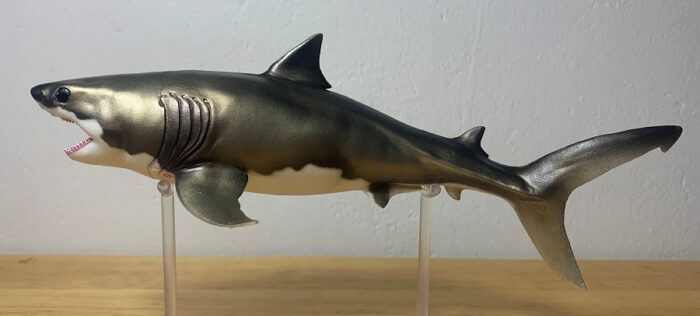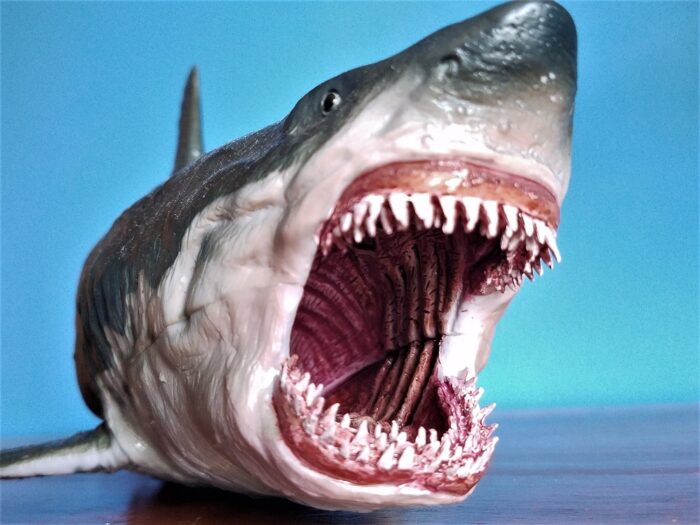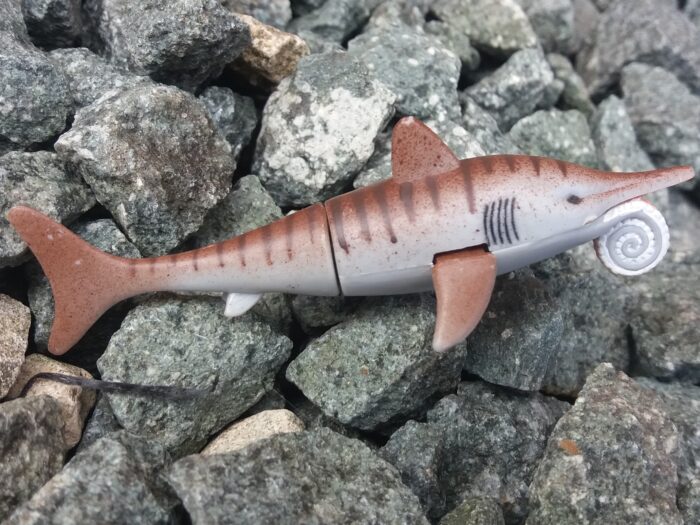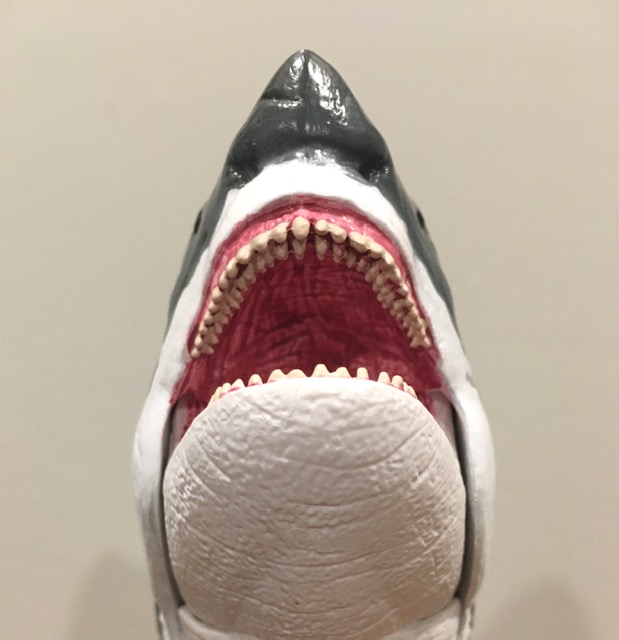Otodus megalodon is a difficult shark for me to get excited about, despite my love of cartilaginous fishes. Although captivating in concept (a gigantic whale-hunting shark with 7” teeth) there aren’t enough remains of it to really…well…sink your teeth into. Just teeth and vertebrae.
Classification: Shark
Review: Cretoxyrhina (Aidan) (Prehistoric Animal Models by PNSO)
Review: Megalodon (Soft Model by Favorite Co. Ltd.)

Review and photos by Zim, edited by Suspsy
Otodus megalodon is probably one of the most well-recognized prehistoric animals of all time due to our fascination of giant versions of animals, in this case, sharks. Though it is frequently depicted as an oversized great white shark due to the resemblance between their teeth, many experts now agree that this is due to convergent evolution rather than a close relation.
Review: Megalodon (Age of the Dinosaurs by PNSO)
Review: Coiled-Toothed Shark/Helicoprion (Lost Kingdoms Series B by Yowie)
Review: Megalodon (Deluxe by CollectA)
Review: Megalodon ( PNSO Scientific Arts)
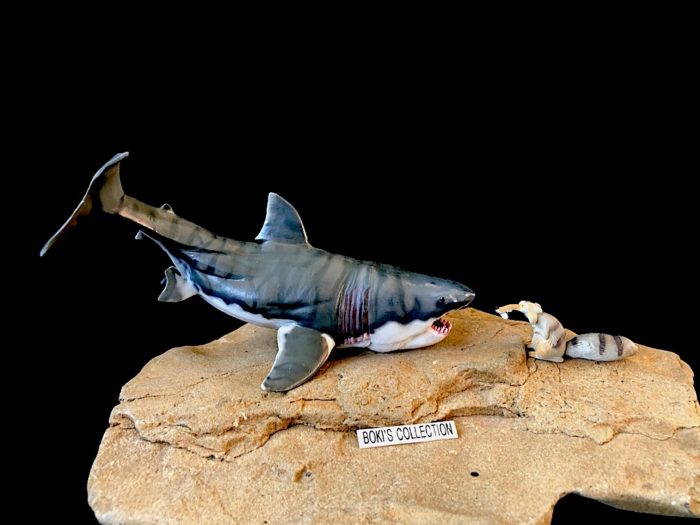
Review and photos by Bokisaurus
When it comes to suffering from identity crisis, no other extinct species exhibits this more than the mighty Megalodon (Carcharocles megalodon), which is ironic given how popular it is.This identity crisis is of course due to the fact that very little fossil material is available to help create an accurately restoration of it and that the majority of the restorations, from paleo art to movies, are all based on the extant Great White shark, a species that many believed for years it resembles.
Despite this crisis, Megalodon is the most famous of the extinct sharks, and possibly only surpassed in popularity by the extant Great White that still roam todays oceans.
Review: Megalodon (Wild Safari by Safari Ltd.)

Review: Cladoselache (Kaiyodo series 1)
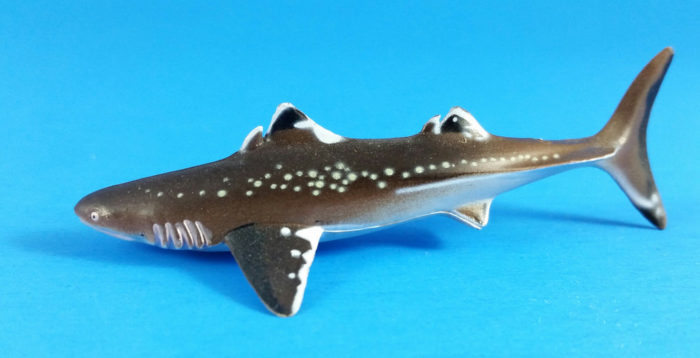
Ah, Cladoselache. The first shark! How exciting. Up for review today is the first rendition of the first shark, made by Kaiyodo.
Cladoselache is believed to be a very agile and swift predator – this is very well represented in this replica.





